While most visitors to Alaska head straight to Denali or Kenai Fjords, America’s largest state is home to over a dozen national parks that showcase the raw wilderness of the Last Frontier – from glacier-filled valleys to remote coastal landscapes where bears fish for salmon in crystal-clear streams.
From easily accessible parks near Anchorage to remote preserves that require bush planes to reach, here are 16 national parks in Alaska that let you experience the state’s untamed beauty, diverse wildlife, and rich cultural heritage at your own pace.
- Best for seeing glaciers: Kenai Fjords National Park
- Best for wildlife watching: Denali National Park
- Off the beaten path: Gates of the Arctic National Park
- Best for day trips: Katmai National Park
- Best for hiking: Wrangell-St. Elias National Park
- Best for photography: Glacier Bay National Park
Denali National Park
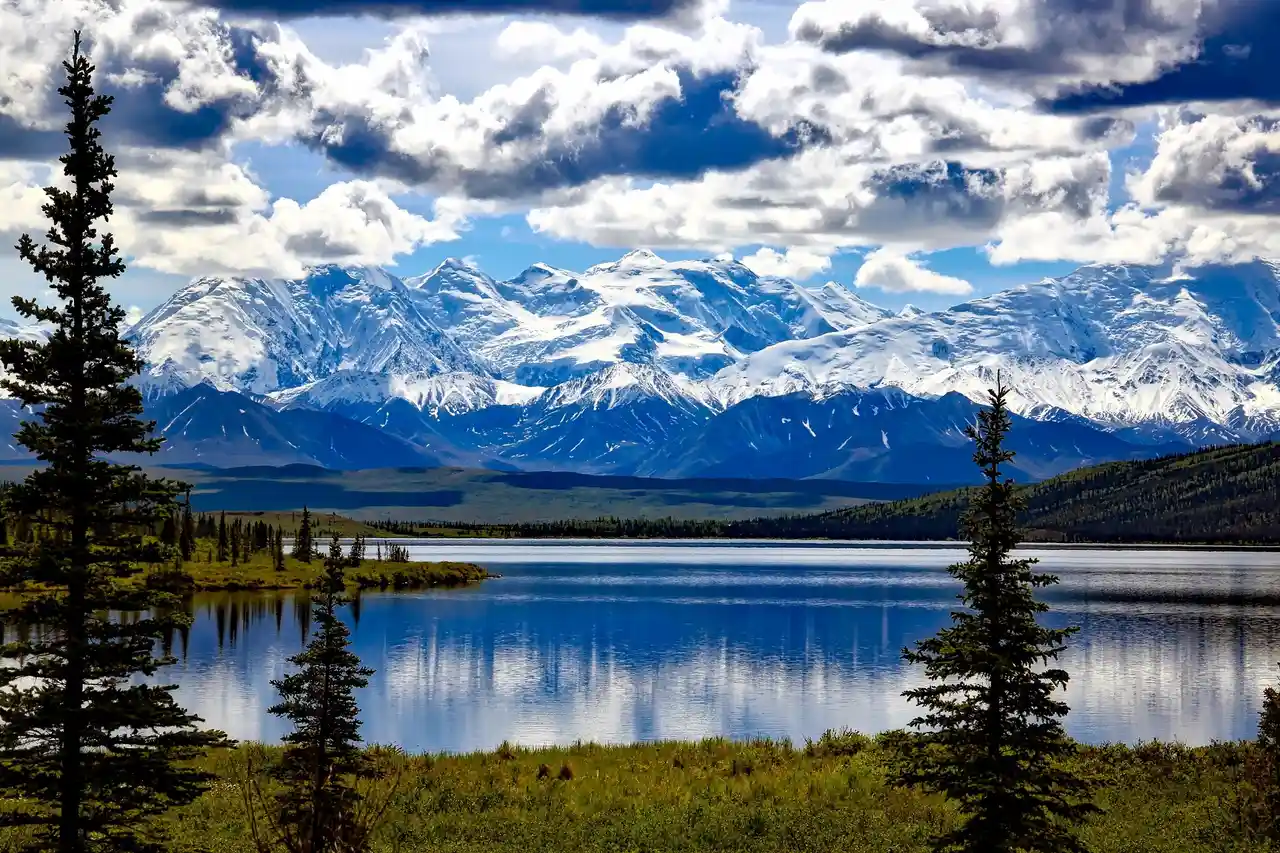
Ever spotted a grizzly bear grazing in a meadow while a snow-capped peak towers above? That’s just another day in Denali National Park, home to North America’s tallest mountain. A four-hour drive from Anchorage, this vast wilderness stretches over six million acres of wild Alaska, where moose amble across tundra and wolves roam freely through spruce forests. From May to September, you can hop on the park’s bus system to spot wildlife, hike through colorful wildflower fields, or set up camp under the midnight sun. And if you’re lucky, you might catch the mountain itself emerging from the clouds – a sight that only 30% of visitors get to experience.
Kenai Fjords National Park
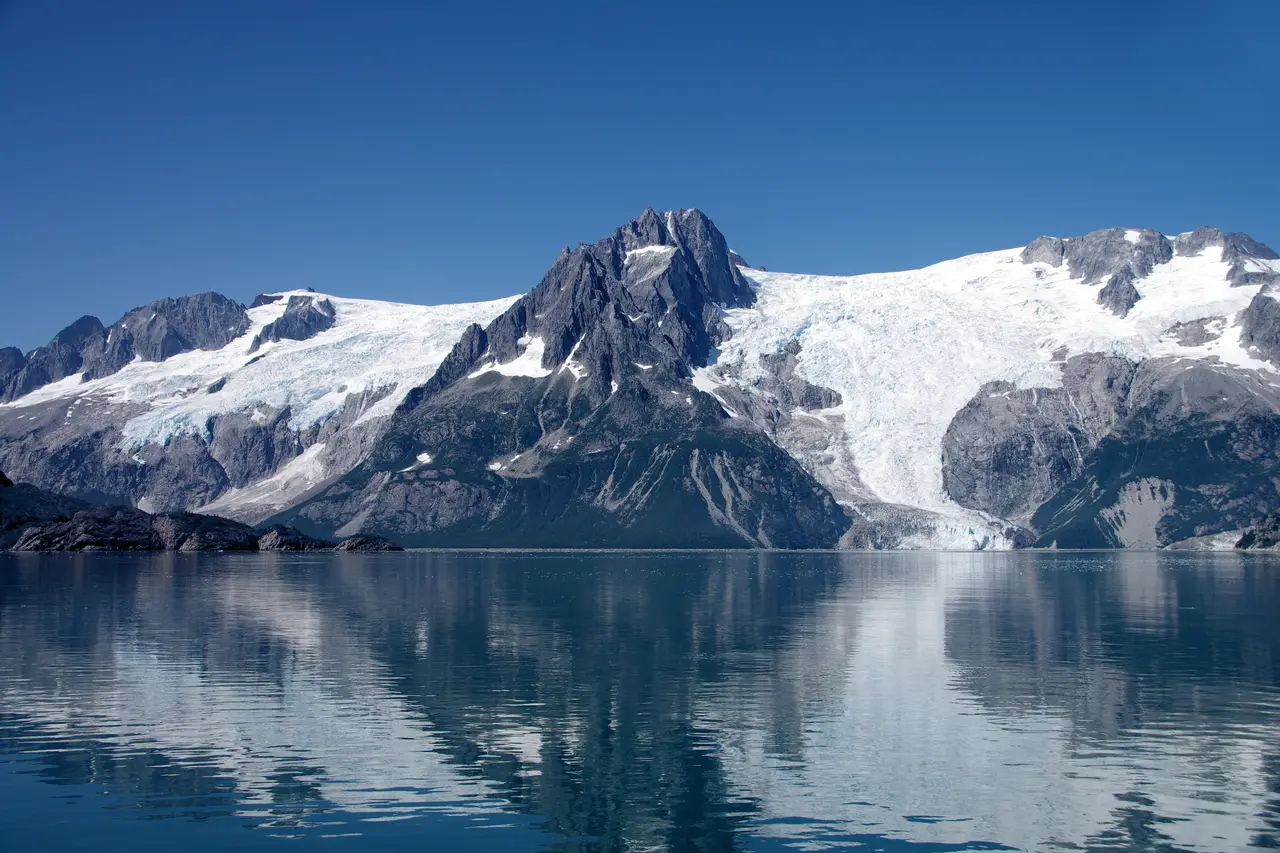
Step into a world of glaciers and fjords at Kenai Fjords National Park, where nature puts on a spectacular show. You can hop aboard a boat tour to glide past towering ice walls and spot whales breaching in the pristine waters, or hike the Harding Icefield Trail for panoramic views of the park’s frozen landscape. The Exit Glacier area offers easy walking trails that lead you right up to the massive ice formation, making it a great spot for families. For a unique overnight experience, book a stay at one of the public use cabins tucked away in Aialik Bay, where the sound of crackling ice and gentle waves creates the perfect wilderness soundtrack.
Glacier Bay National Park

Ever watched a massive glacier calve into the sea with a thunderous roar? That’s just another day at Glacier Bay National Park, where towering ice walls meet the pristine waters of Southeast Alaska. This 3.3-million-acre paradise is best explored by boat, letting you get up close to both the massive glaciers and the local wildlife – from humpback whales breaching in the distance to harbor seals lounging on ice floes. The park’s landscape is constantly changing as the ice retreats, creating new habitats for bears, mountain goats, and sea birds. You can hop aboard one of the daily cruise tours from Gustavus, or paddle through the quiet fjords in a kayak, where the only sound is the gentle splash of your paddle and the occasional crack of moving ice.
Katmai National Park

Get up close with wild brown bears at Katmai National Park, one of Alaska’s most unique wildlife viewing destinations. The park is home to over 2,000 bears who gather at Brooks Falls during salmon season, where you can watch them catch fish from a safe viewing platform. For a deeper look into the park’s history, visit the Valley of Ten Thousand Smokes, created by a massive volcanic eruption in 1912. You can take guided tours through this otherworldly landscape or stay at Brooks Lodge to maximize your chances of seeing bears in their natural habitat.
Wrangell-St. Elias National Park
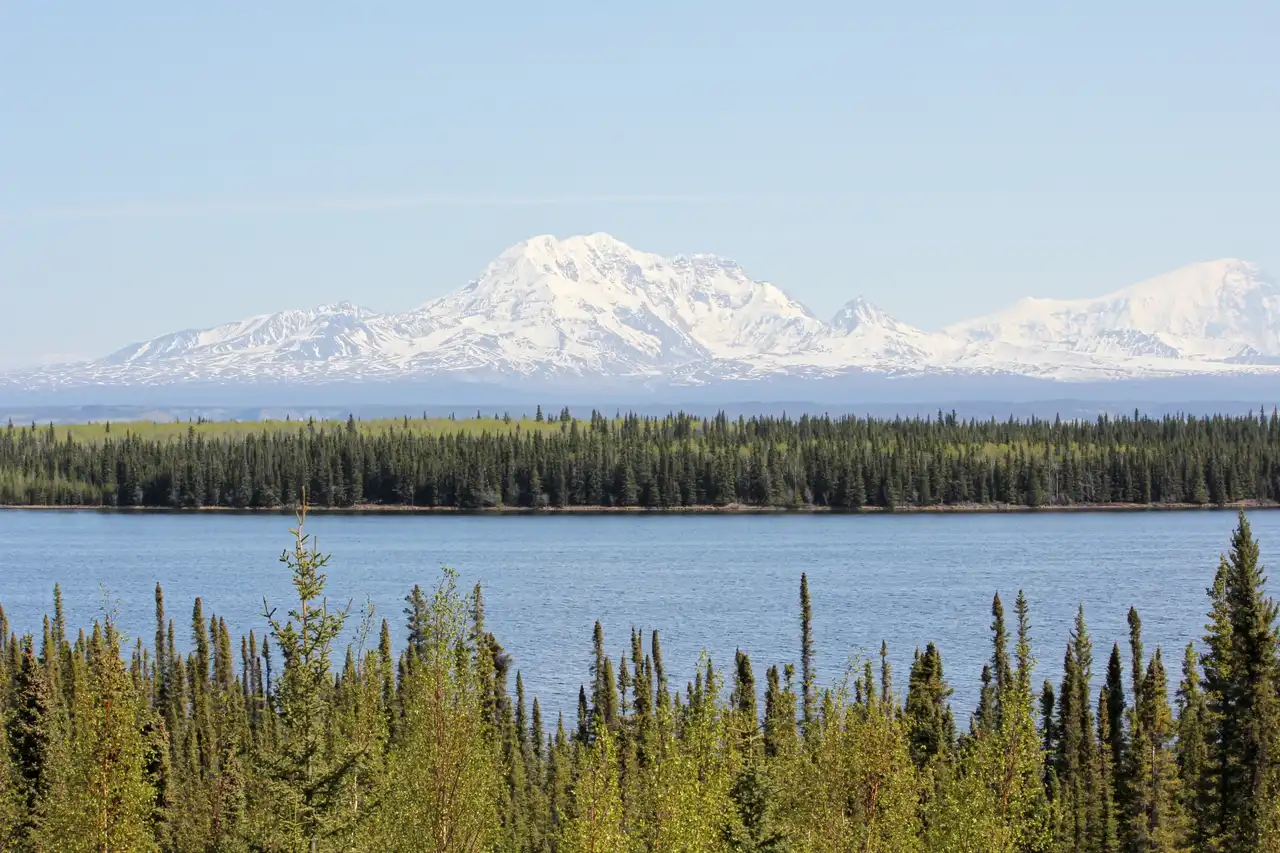
I first visited Wrangell-St. Elias National Park in Alaska during a summer road trip in 2019. As America’s largest national park, it spans an impressive 13.2 million acres of Alaskan wilderness, stretching from the Saint Elias Mountains to the Gulf of Alaska. Remote villages and abandoned copper mines dot the landscape here, alongside massive glaciers and nine of the sixteen highest peaks in the United States. The park’s Kennecott Mines National Historic Landmark tells the story of Alaska’s copper mining era, while the surrounding wilderness offers endless opportunities for hiking, mountaineering, and spotting wildlife like Dall sheep, mountain goats, and grizzly bears in their natural habitat.
Gates of the Arctic National Park
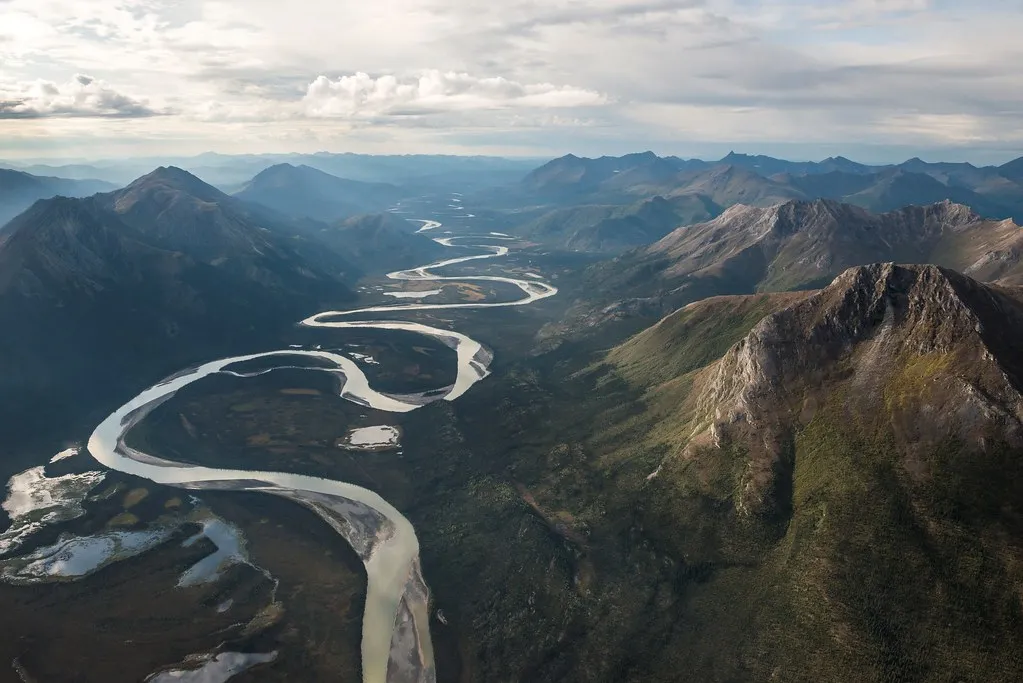
Few places embody true wilderness quite like Gates of the Arctic National Park in Alaska. This vast expanse of untouched land sits entirely north of the Arctic Circle, with no roads, trails, or facilities to speak of – just pure, raw nature stretching as far as the eye can see. Getting here requires either a small bush plane or a serious backpacking expedition, as it’s one of the least visited parks in the entire US system. Those who make the journey find themselves in a landscape of broad river valleys, jagged peaks, and caribou herds moving across the tundra. It’s not a place for casual tourists – you need solid outdoor skills and careful planning – but that’s exactly what makes it special for adventurers seeking genuine solitude in one of America’s last truly wild places.
Lake Clark National Park
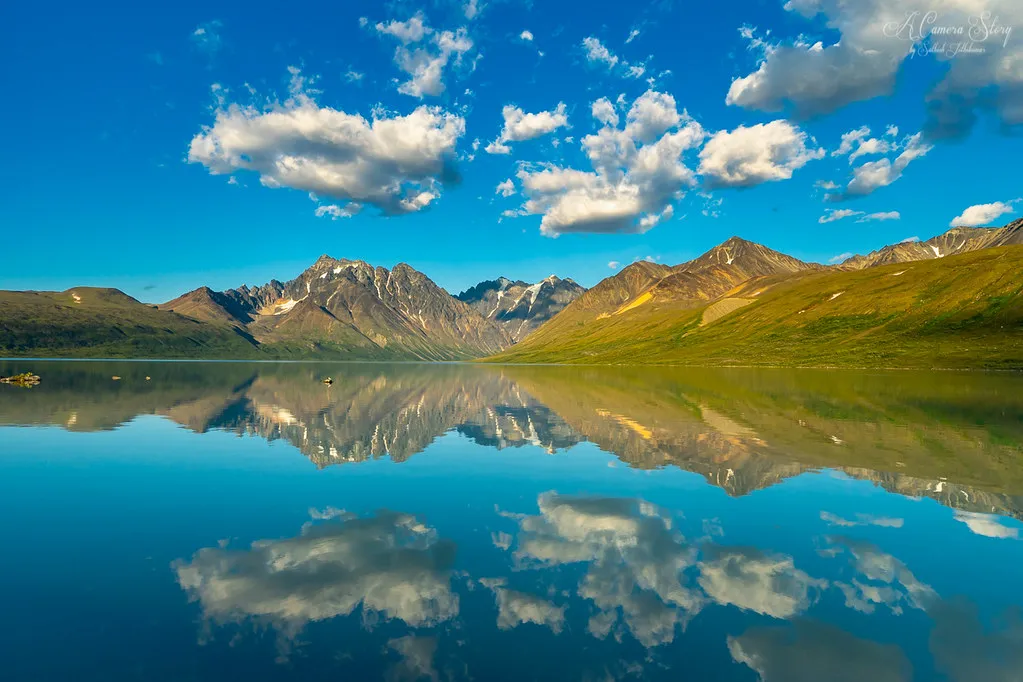
Lake Clark National Park feels like Alaska’s best-kept secret, hidden away from the crowds that flock to more famous parks like Denali. This 4-million-acre wilderness is where the Alaska Range meets the coast, creating a landscape where glacier-carved valleys lead to pristine lakes and active volcanoes loom in the distance. It’s not the easiest park to reach – you’ll need to hop on a small plane from Anchorage – but those who make the journey find themselves in a place where brown bears fish for salmon in crystal-clear streams, and mountain goats navigate steep alpine ridges. What makes this park special isn’t just its raw beauty, but how it lets you experience Alaska’s wilderness without the tour buses and crowds you’ll find elsewhere.
Kobuk Valley National Park
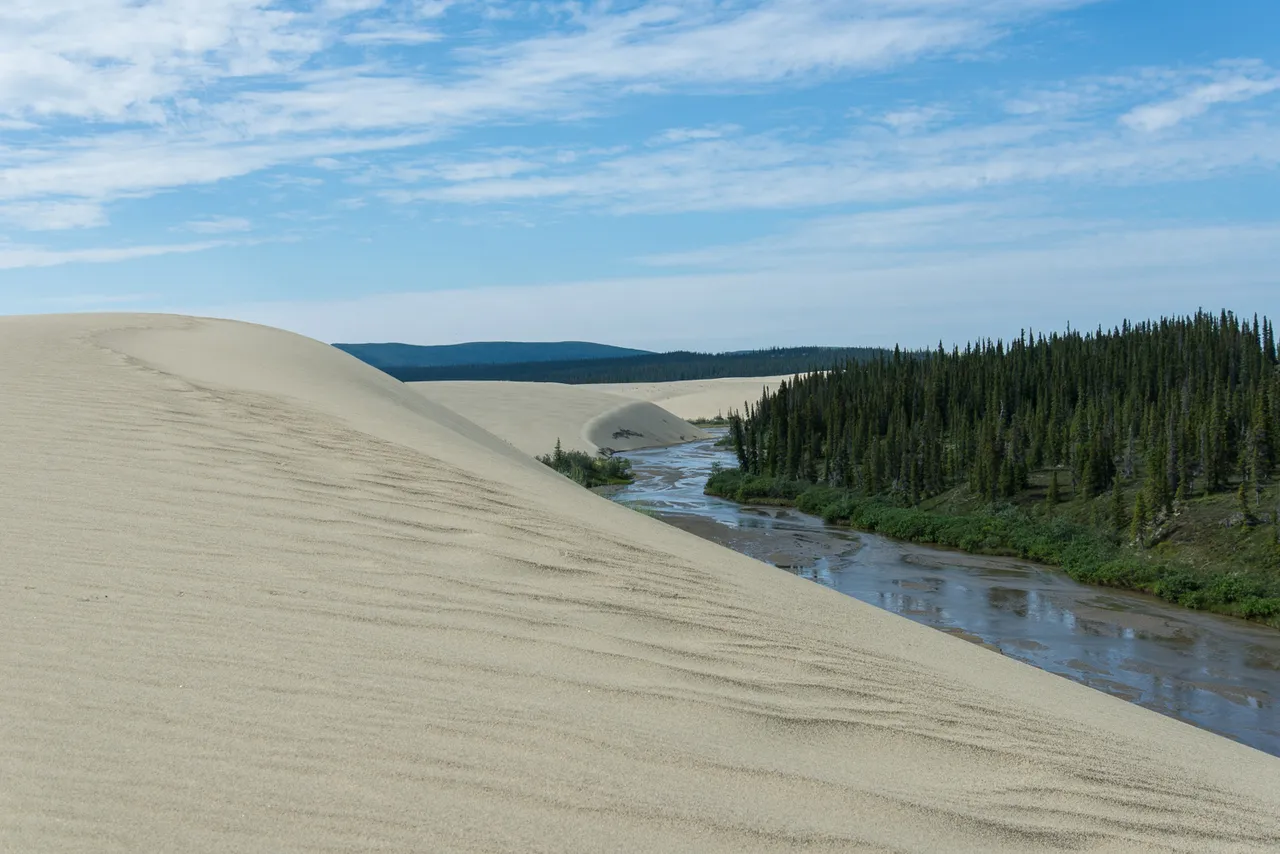
Many travelers venture to Kobuk Valley National Park for its massive sand dunes, which rise unexpectedly from the Arctic landscape, but this remote wilderness can also be considered a caribou sanctuary. The park serves as a crucial migration corridor for thousands of caribou that cross its terrain twice yearly, creating an impressive natural spectacle. While summer brings opportunities for hiking across the dunes and watching wildflowers bloom in the tundra, winter transforms the landscape into a pristine playground for snowshoeing and watching the northern lights dance across the sky. Located entirely above the Arctic Circle, this park receives no roads or trails, making it one of Alaska’s most untouched natural spaces – but those who make the effort to visit by bush plane are rewarded with an authentic Arctic experience few others ever witness.
Klondike Gold Rush National Historical Park
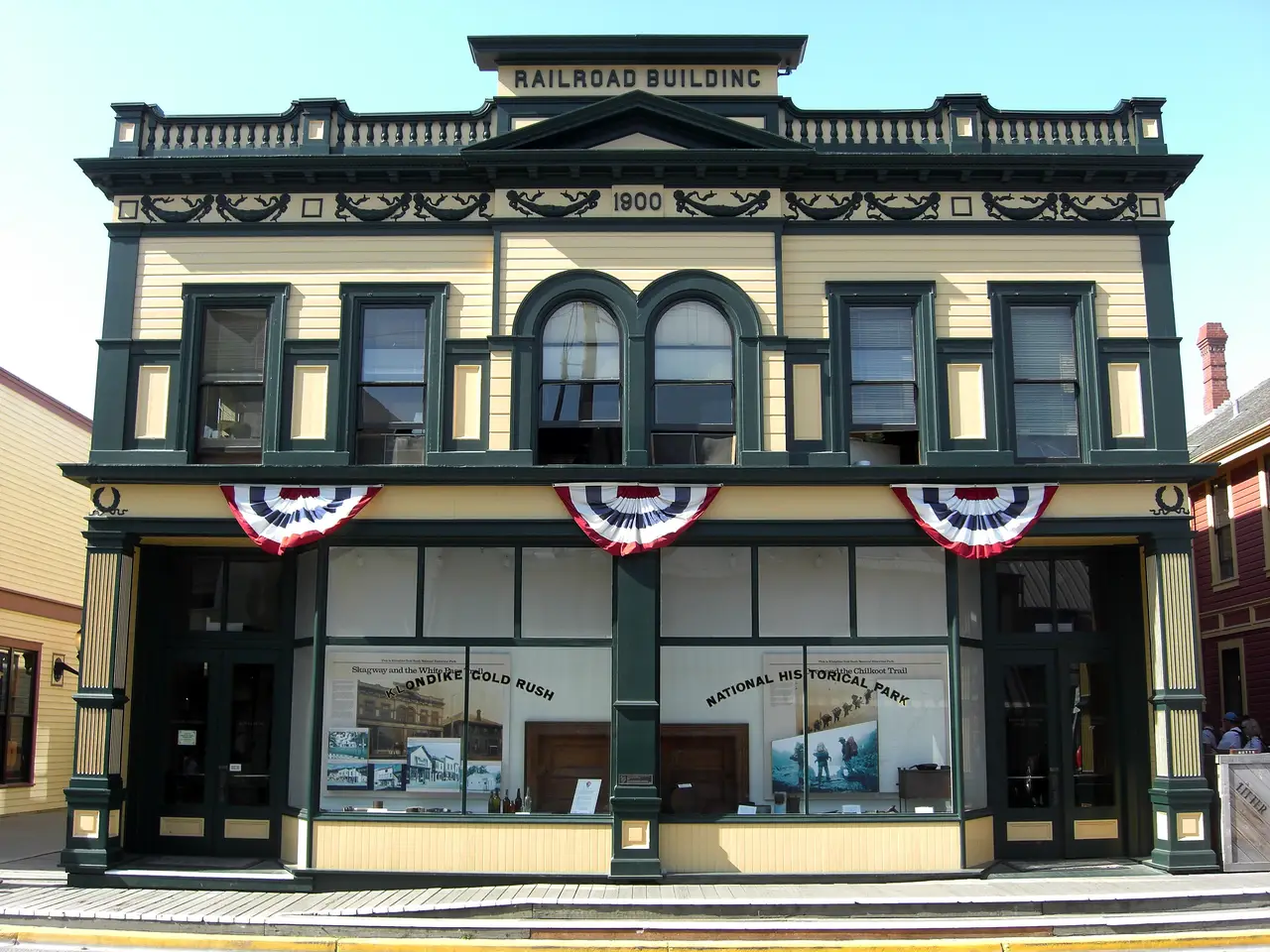
Travelers trek to Klondike Gold Rush National Historical Park for an authentic glimpse into Alaska’s famous gold rush era, but the park offers much more than just mining history. The well-preserved streets of Skagway, the park’s main hub, transport visitors back to the late 1800s when thousands of prospectors passed through on their way to strike it rich in the Yukon. While the gold rush stories draw most visitors, the park’s scenic hiking trails along the historic Chilkoot Trail and White Pass routes provide excellent opportunities for day hikes and multi-day adventures. Whether you’re exploring the restored buildings in town, joining a ranger-led program, or following in the footsteps of gold seekers on the trails, Klondike Gold Rush Park connects you with one of Alaska’s most fascinating chapters of history.
Sitka National Historical Park
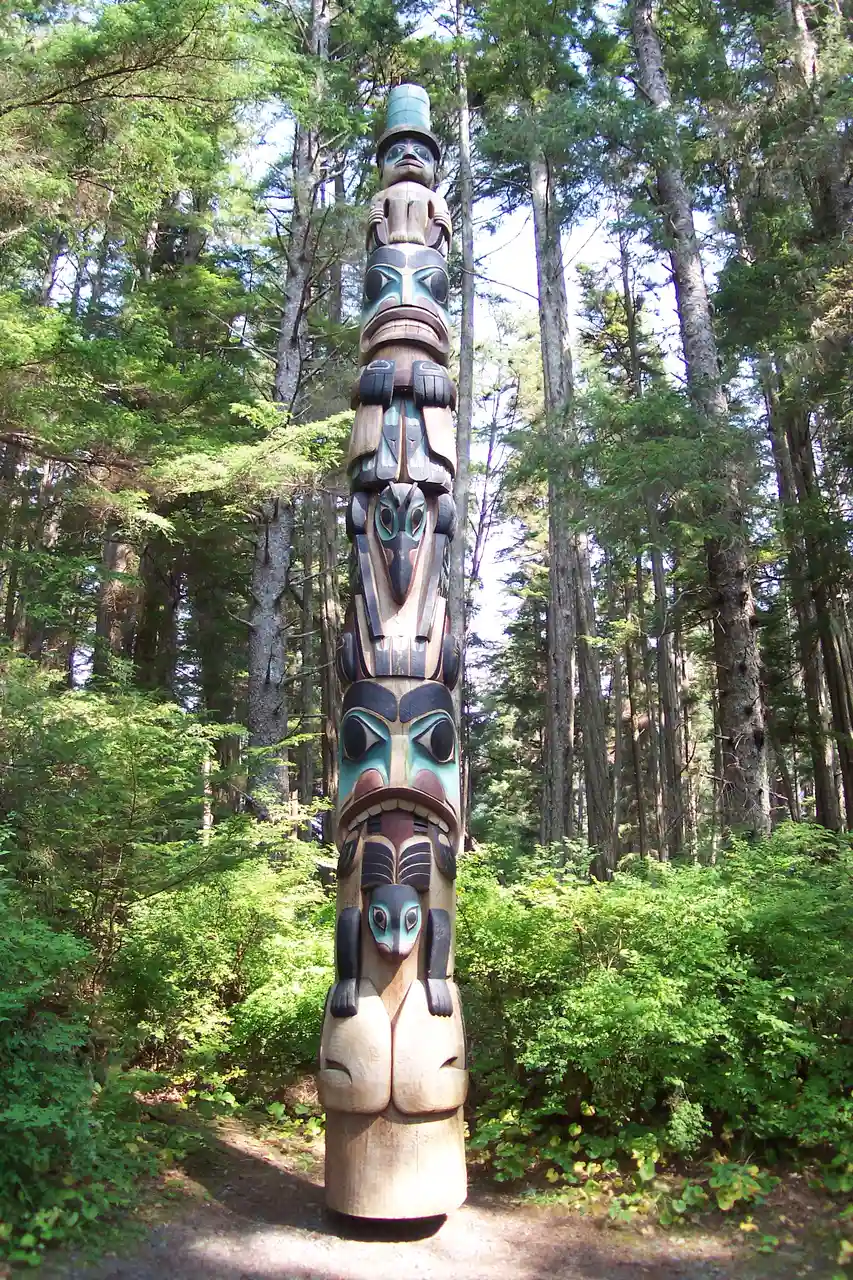
If you’re interested in both Alaskan history and nature, Sitka National Historical Park needs to be on your list. Located on Baranof Island, this park preserves the site of a historic battle between Russian traders and the indigenous Tlingit people, while featuring a collection of authentic totem poles along its coastal trail system.
Aniakchak National Monument

Step into one of Alaska’s most remote and wild landscapes at Aniakchak National Monument, home to a massive volcanic caldera formed by an ancient eruption. The 6-mile wide crater serves as a natural amphitheater where you can spot brown bears fishing in the rivers and caribou grazing on the tundra. Take a challenging hike to the caldera rim for views of the crater lake and surrounding peaks, or brave the class III rapids of the Aniakchak River as it cuts through the volcanic terrain. With fewer than 100 visitors per year, you’ll likely have this rugged wilderness entirely to yourself – just remember to bring proper gear and arrange transportation well in advance, as this park is only accessible by air taxi or boat.
Alagnak Wild River

Located 150 miles southwest of Anchorage, the Alagnak Wild River flows freely through the untamed Alaskan wilderness. Unlike many of Alaska’s managed waterways, this 67-mile stretch runs exactly as nature intended, carving its way through tundra and spruce forests. The river earned its nickname “Branch River” from locals who watch it split into multiple channels, creating a maze-like paradise for salmon and rainbow trout. During summer months, you’ll spot anglers casting lines into the crystal-clear waters, while rafters navigate the Class II and III rapids. Because the river passes through prime grizzly habitat, it’s common to see these massive bears fishing along the banks, completely unbothered by human observers – just like they’ve done for thousands of years.
Bering Land Bridge National Preserve
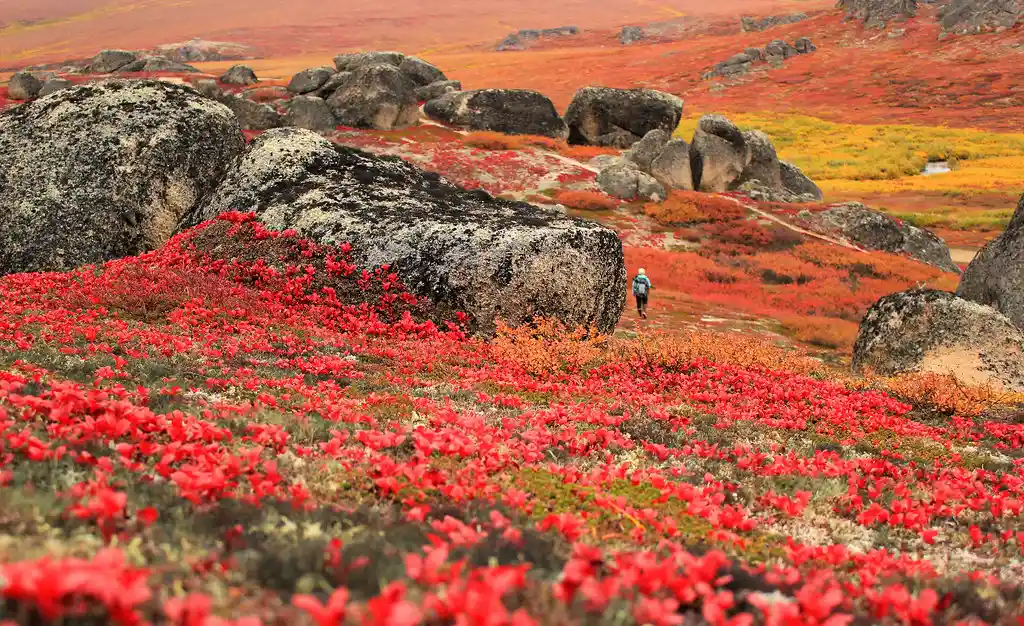
Ever wonder what the ancient land bridge between Asia and North America looked like? The Bering Land Bridge National Preserve gives you a glimpse into that fascinating piece of natural history. This remote stretch of Alaska’s Seward Peninsula is where prehistoric humans and animals once crossed between continents, making it one of the most significant migration routes in human history. Today, the preserve is home to hot springs, ancient lava flows, and hardy wildlife that have adapted to the harsh Arctic conditions. While it’s not the easiest place to reach – you’ll need to arrange special transportation as there are no roads leading here – the reward is experiencing one of the most unique and historically important landscapes in North America.
Cape Krusenstern National Monument
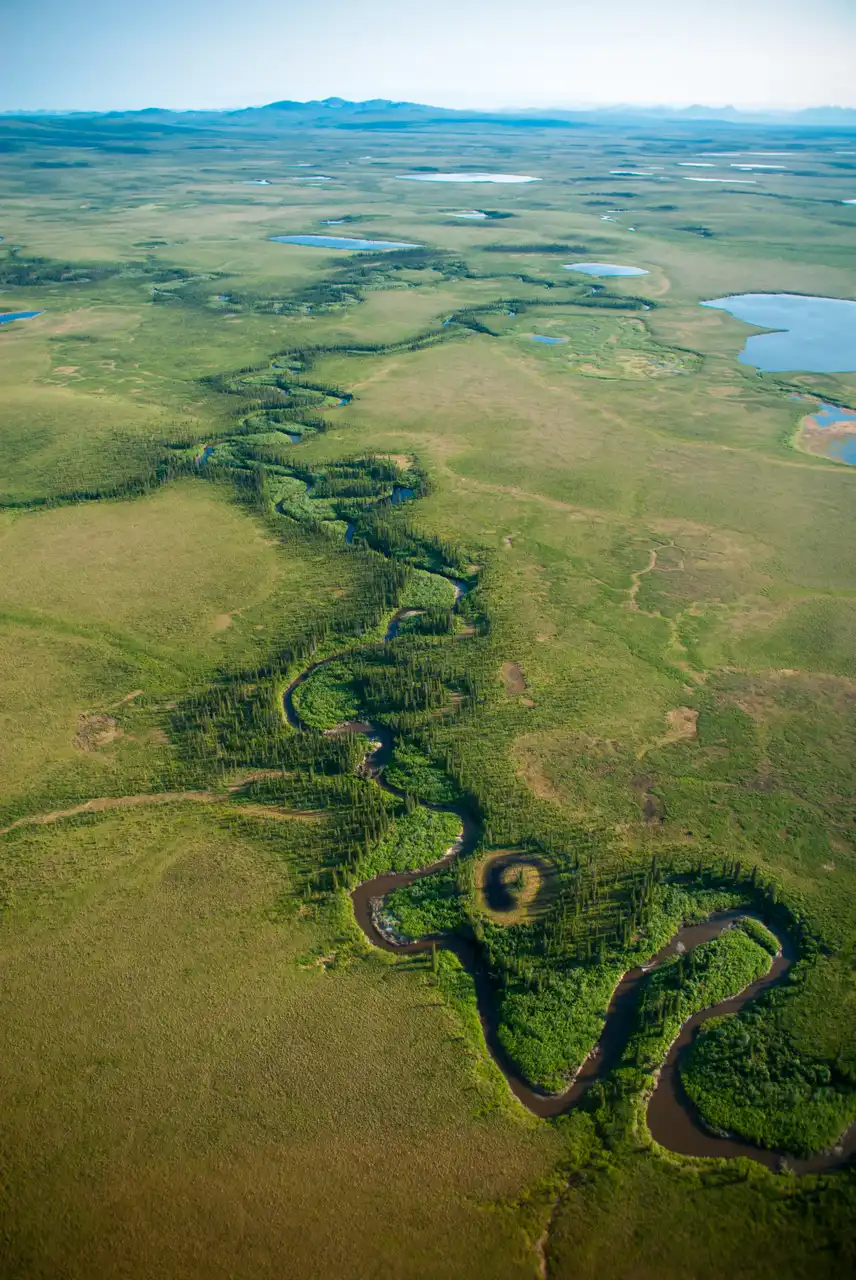
Step back in time at Cape Krusenstern National Monument, where ancient ruins and archaeological sites tell the story of 4,000 years of human history. This coastal monument stretches along 70 miles of shoreline, offering visitors a chance to see where Alaska’s earliest inhabitants once lived. Walk along the beach ridges to discover old hunting camps and settlements, or watch for the thousands of migratory birds that stop here during their seasonal journeys. For a unique experience, join a guided tour to learn about the traditional hunting practices of the Inupiaq people who still use these lands today. It’s an ideal spot for those interested in both natural and cultural history.
Noatak National Preserve
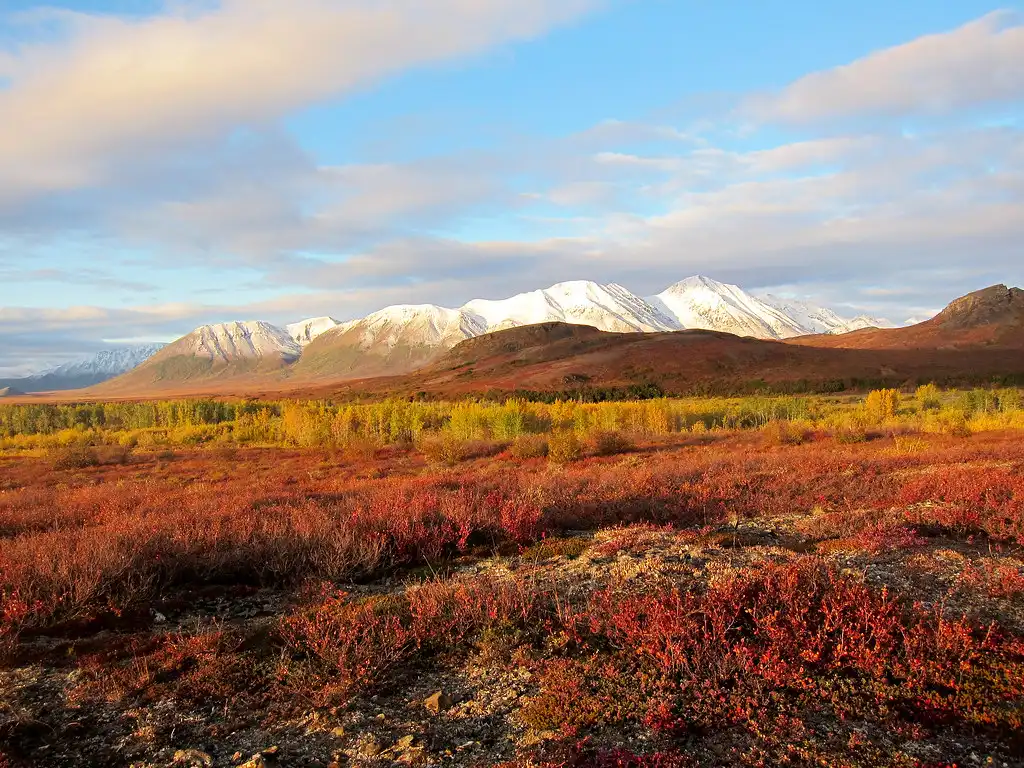
Looking for a true Alaskan wilderness experience? The Noatak National Preserve delivers just that. Located in the western Brooks Range, this pristine park protects North America’s largest untouched mountain-ringed river basin, the Noatak River system, which stretches over 6.5 million acres of rugged Arctic landscape.
Yukon-Charley Rivers National Preserve
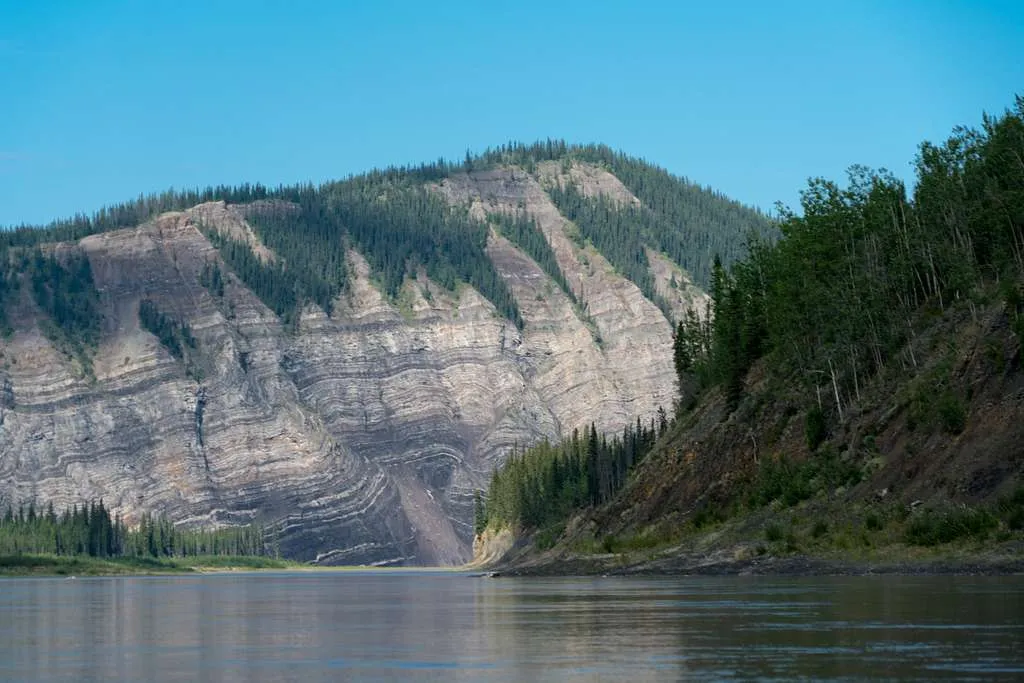
Located where the Yukon and Charley Rivers meet in eastern Alaska, this vast preserve feels like a journey back to when the Gold Rush defined this rugged terrain. The landscape tells stories of prospectors who once searched these rivers for fortune, and the remnants of their cabins still dot the wilderness. Unlike other Alaskan parks, Yukon-Charley offers a unique blend of cultural history and untamed nature – think peaceful river valleys alongside fossil-rich bluffs that date back millions of years. The preserve remains a crucial sanctuary for peregrine falcons, and if you paddle down the Yukon River, you might spot one diving for fish, just as they have for centuries. And while most visitors come for the river adventures, the preserve’s quiet backcountry trails lead to hidden valleys where caribou roam freely and wildflowers carpet the ground during brief summer months.

